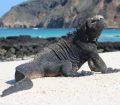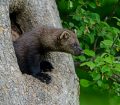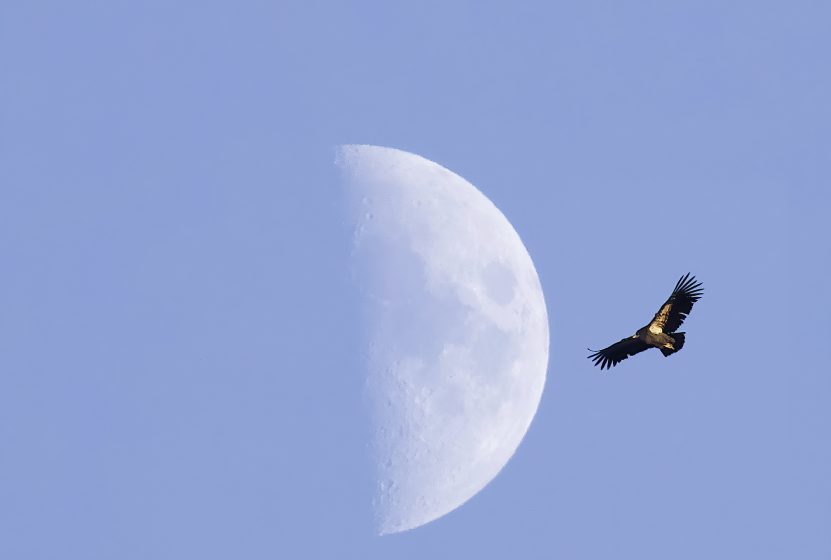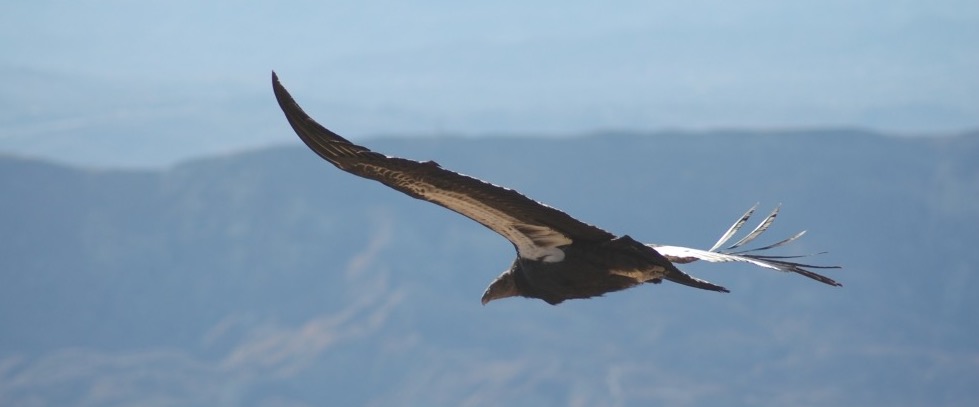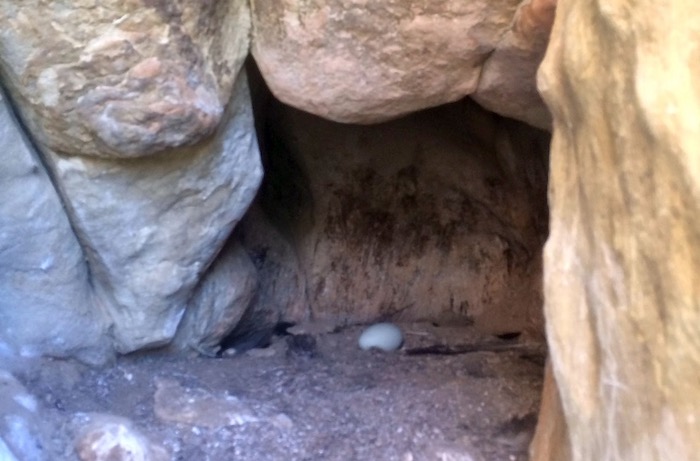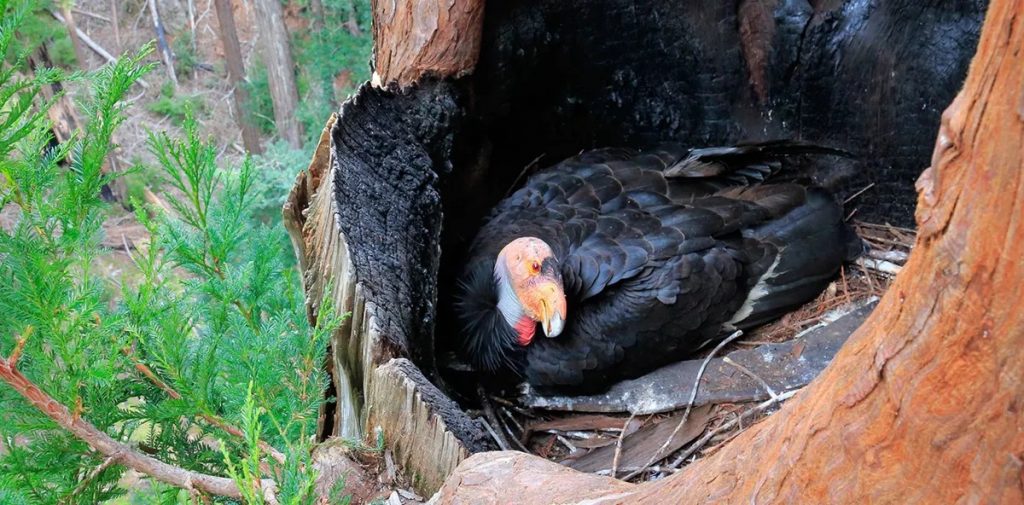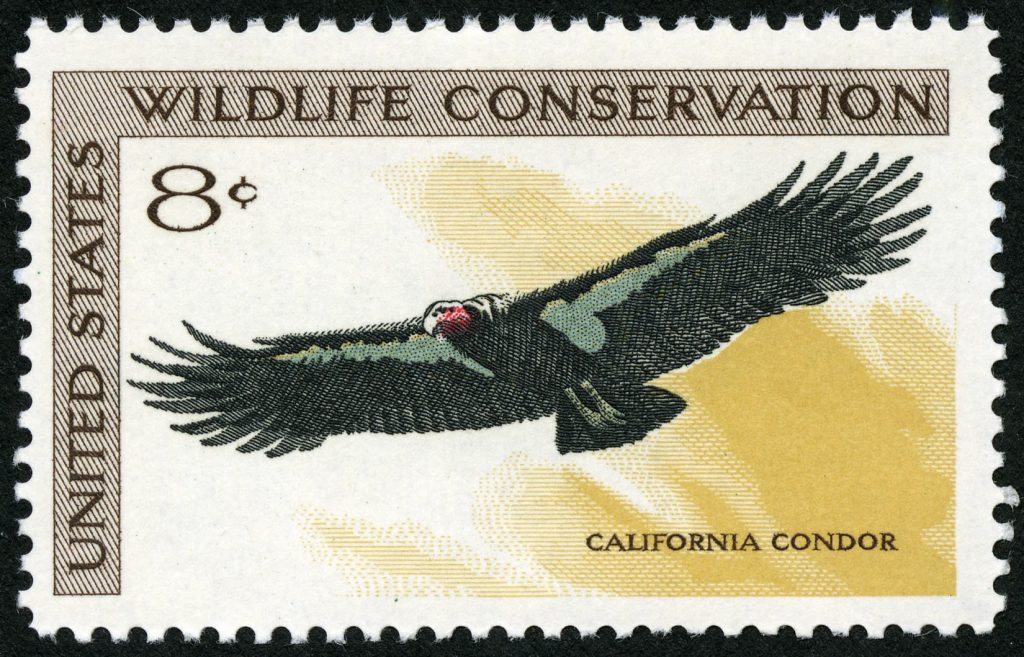As one of America’s most endangered species, the California condor (Gymnogyps californianus) also holds the distinction of being the largest wild bird on the North American continent.
Listed as an endangered species since 1967, the California condor has a wingspan nine feet long. This large bird can tip the scales at more than 20 pounds and is noted for its black feathers and striking white patches on the underside of its wings.
The California condor once dominated the skies of North America. During the Pleistocene epoch (2.58 million years ago to 11,700 years ago), condors inhabited most of the continent, from Mexico to Canada. A dramatic decrease in their range occurred approximately 10,000 years ago with the extinction of the large mammals such as mastodons, camels, and giant ground sloths that condors feasted on.
By the time European settlers arrived, the condor population had retreated to the Pacific coast. However, shooting and egg collecting started to take a toll on the bird’s numbers.
Declines in the California condor population were first noticed as early as 1890. These scavengers were dying from eating poisoned carcasses set out by ranchers to kill large predators like mountain lions, wolves, and coyotes.
By the early 1900s, the only condors remaining were located in the mountainous regions of southern California.
By 1965, the population was estimated to be about 60 condors.
Less than 22 California condors were alive in 1982.
An aggressive rescue attempt began to save this magnificent aerial scavenger. A captive breeding program was launched in 1983 with the Los Angeles Zoo and the San Diego Wild Animal Park.
Wild California condors were captured and placed into the breeding program as a last-ditch effort to save the species. The last wild condor was captured in April 1987.
This captive breeding program turned out to be surprisingly successful. Condors started being released back into the wild in California beginning in January 1992.
By the end of 1996, condors were released into the wild in Arizona near the Grand Canyon.
While the condor population is slowly growing, two of these rare bird’s behaviors continue to put it at risk: slow maturation and diet.
Even though the California condor can live up to 60 years in the wild, the birds do not mate until approximately seven years old. Once condors mate, the female lays only one egg. Both the female and male take turns incubating the four-inch-long egg in shifts lasting one to five days.
The condor chick hatches after 56 days. Both parents bring food to the nest and protect the chick from predators like ravens and Golden eagles.
After five months, the young condor is ready to fly but will continue to rely on its parents for at least another six months.
This 12-month nesting cycle, with only one egg per cycle, means condors can only reproduce a maximum of one offspring every two years.
The second major factor contributing to the California condor’s fragile grip on survival is its carrion diet, with a preference for recently deceased large animals like cattle, elk, and deer.
To locate its next meal, the condor takes to the sky to search for food during the warmer hours of the day. Afternoon upward thermals allow the big bird to expend less energy and soar at speeds close to 60 mph. While the California condor can fly as high as 15,000 feet, most of its time is spent gliding below 2,000 feet.
Another challenge to the current California condor population still comes from the end of a shotgun. Although it has been illegal to shoot a condor for more than 100 years, lead poisoning still kills the birds indirectly when they ingest lead in carrion.
Lead gunshot used by hunters stays in non-recovered animals and gut piles. As these carcasses are consumed, so is any remaining lead. The lead ingestion causes loss of appetite, lethargy, and progressive muscle failure.
The use of lead ammunition has been restricted in waterfowl for nearly 30 years and has recently been banned in California’s condor habitat. The state created a “non-lead” zone in 2007 for those hunting within the condor’s range. By 2013, non-lead ammunition was required for all hunters in the state.
California condors have also experienced varying degrees of poisoning from the insecticide DDT (dichlorodiphenyltrichloroethane). Researchers believe this chemical, a synthetic pesticide developed in the 1940s and banned in the U.S. in 1972, continues to play a dangerous role in damaging condor eggs.
As recently as 2006, the eggs from two captive-born condors that had successfully nested in the Big Sur area had cracked before the chicks could hatch. An investigation revealed the shells were too thin, and DDT was the primary suspect.
Since that initial failure, 12 out of 16 California condor nests have been nonproductive between 2007 and 2009. All shell fragments recovered from each nesting site were thin and weak.
However, condors that were released hundreds of miles to the south have experienced an 80 percent successful hatching rate.
Researchers believe the Big Sur condor population ended up with DDT in their systems by dining on the carcasses of sea otters, sea lions, and other fatty marine mammals. Previous research revealed high levels of DDT in the blubber of these animals.
While the California Condor’s wild population has dramatically increased from 22 birds in 1982 to approximately 300 today, efforts continue to rebuild and redistribute the species across the American West.
In May 2022, the Redwood National and State Parks and the Yurok Tribe released two California condors — the first time condors have soared among Northern California’s redwoods since 1892.

